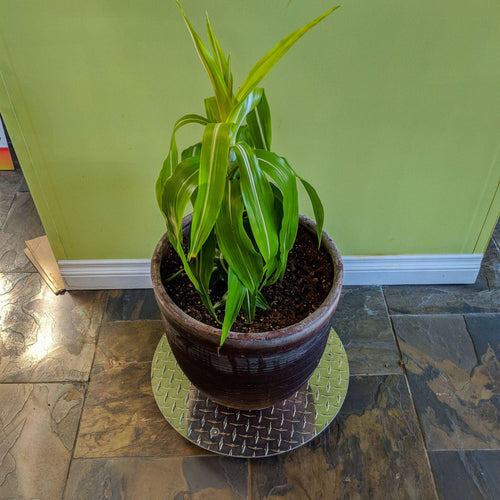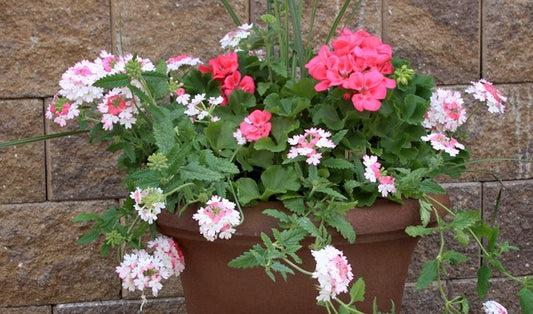When you have pets, especially young ones, it often seems they will try to chew on just about anything they can get into their mouths. If you have plants inside the house or have a landscaped yard and garden this adds an extra concern. The last thing you want is to have them chew on something that could be potentially dangerous and make them sick. It’s important plants inside and outside the home are non-toxic to keep your pets safe.
The reason plants can be toxic to pets is because of the chemicals they contain inside the plant parts. Compounds like oxalates, solanine, glycosides, or alkaloid lycorine may cause vomiting, nausea, diarrhea, swelling and redness of the mouth, throat, and lips, and trouble breathing. Depending on the toxicity level of the chemical compounds even touching parts of the plants, especially the sap, may cause various skin irritations.
If plants are dangerous to animals, they will be labeled as mildly, moderately, highly, and very highly poisonous. The weight and age of the pet and the part/amount of plant eaten will determine how severe the reaction to the toxins will be.
Mildly toxic plants may be mildly irritating if ingested, especially the sap within the plant tissues. Plants with moderate toxicity may cause vomiting, diarrhea, stomach pains, skin irritations, and breathing difficulty. Highly toxic plants are very poisonous and can cause severe symptoms of gastrointestinal distress (vomiting, diarrhea, stomach pains) as well as skin irritations and breathing difficulties. Very highly toxic plants can be life threatening if ingested.
For the most part, keeping your pet safe around plants is similar for houseplants inside and plants they can access in the yard and garden. Undoubtedly though there are different plants to watch for in the different spaces.
Indoor Pet Safety
Keeping your pets safe indoors is a little bit easier as you generally are in the same vicinity and keep a closer watch on them. But there are still some things you can do to keep your pets (and plants!) out of harm’s way.
One of the easiest things to do is to simply put plants where your cat or dog can’t reach them. If they are out of reach there isn’t any chance they can ingest them. This means keeping potted plants away from crates/kennels and up off the floor. You can set them up on bookshelves, or the top of cabinets if accessible. With cats it is a little more challenging to get plants out of reach, but plant hangers would be a great solution. If you have a new puppy that is an active chewer, you may have to move plants to a room where the puppy isn’t allowed. Putting larger plants on a heavy duty rolling plant caddy will make this process easier all the way around.
Another thing is to keep your pets active and engaged with different toys and activities. Make sure they don’t get bored; boredom often leads to trouble in pets. To keep them from getting bored have a variety of toys to play with, things that will stimulate their minds, and give them plenty of exercise.
One of the easiest ways to avoid having problems is to make sure the plants you have in the home aren’t toxic to pets. In that case, if they do nibble on them the chances of getting sick are slim. Some of the most common pet safe plants and plants to avoid may be surprising.
• Spider plant
• Palms
• African violet
• Bamboo
• Boston fern
• Bromeliads
• Christmas cactus
• Prayer plant
Plants to Avoid
• Aloe
• Sago palm
• Arrowhead
• Bird of paradise
• Jade
• English ivy
• Peace lily
• Asparagus fern
• Philodendron
• Cactus
• Golden pothos
Outdoor Pet Safety
Keeping your pets safe from plants outdoors is a little bit more challenging than within the home. Typically, pets are left unattended when outside and there are generally more plants in your yard.
Regardless of whether you have an established yard or are planning to landscape your space, if you are a pet owner it’s important to think about the safety of the plants you landscape with.
If you have a patio or deck with plants on it you can keep plants up higher where they aren’t accessible to your dog. Obviously, as in the house, it’s harder to keep cats away from things. You can set them up on the rails or simply use taller planters that dogs can’t reach into. Use a rolling plant caddy under large plants to move them to spaces in the yard the pets have less access to, or an area where you have a clear line of sight from inside the house.

Gardens can be very tempting to pets too. Lots of enticing smells and then tasty fruits and/or veggies. To keep your pets from munching on your produce, and the plants themselves, fence the area off to keep them out entirely. Fencing also works well for ornamentals they should stay away from.
Just like inside the house it’s good to keep your pets busy when they are outside. Give them plenty of toys to play with and exercise them. If they stay active and engaged with a toy or activity they will be less likely to bother your plants.
Lastly, if it’s easiest make sure to only plant non-toxic specimens. Similarly, to houseplants some of the most common outdoor plants can be toxic in varying levels to your pets.
Pet Safe Outdoor Plants
HERBS
• Purple basil
• Pineapple sage
• Fennel
• Cilantro
• Thyme
FLOWERS
• Canna lily
• Snapdragons
• Cornflower
• Sunflowers
• Zinnia
• Marigolds
• Aster
• Gerber daisy
ORNAMENTAL GRASSES
• Bamboo
• Japanese Forest Grass
• Reed Grass
SHRUBS/TREES
• Windmill palm
• Mulberry tree
• Hibiscus
• Magnolia
• Forsythia
Outdoor Plants to Avoid
• Iris
• Lily of the Valley
• Foxglove
• Mums
• Bleeding heart
• Hostas
• Clematis
• Morning glory
• Begonia
• Hydrangea
• Burning bush
• Azalea
• Rhododendron
• Boxwood
• Tulips
• Daffodils
• Sago palm
If you are a pet owner, it’s important that you take a moment and think about the plants you have in and around your home. Some common plants can be harmful to cats and dogs if they are ingested depending on the amount eaten and the size/age of the animal. To keep your pets safe stick to non-toxic plant varieties or take measures to decrease the chance of accidental ingestion.





